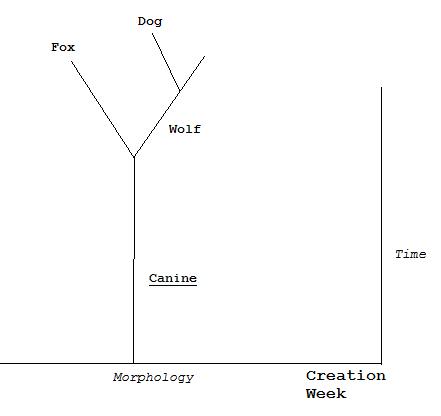One of the lingering talking points used by darwinists in debates is fixity of species, which as usual is used in a way that is rhetorically resistant to correction. It just popped up here at UD, and so, by way of DDG search, let’s lay it to rest, starting with the much despised YEC’s.
The logic here is a fortiori.
Okay, from Creation Wiki, on Baraminology:
Baraminology is a creation biology discipline that studies the ancestry of life on Earth (biosystematics). It draws from the presupposition that God created many separate kinds of organisms as described in the Biblical book of Genesis, and uses scientific means to determine which organisms belong to the same kind (baramin) and by contrast which are unrelated. Creationist biosystematics enables us to more clearly understand the true evolutionary history of the life on Earth that could not be known from a naturalistic perspective.
The Baraminology Study Group (BSG) has been instrumental in this area of research. The group is involved to further the development and research of this theoretical framework in creation biology within a forum of leading creation scientists in the relevant fields.[1]
Illustrating:

On created kinds, they write:
Created kinds are organisms that are defined by creation biology as sharing a common ancestry. The phrase refers to the Genesis account of the creation week during which God created many kinds of plants and animals. They are also referred to as “original kinds,” “Genesis kinds,” and more formally by creation scientists as baramin, a term coined in 1941 by Frank Marsh from the Hebrew words ברוֹא, bara (create) and מִין, min (kind). The study of baramin (known as Baraminology) is a rapidly growing field of creation science involved with the identification of the created kinds . . . .
Early creationists used the word “species” (Latin for “kind”) for the concept of “created kind” referred to in the Bible. The concept of “fixity of species” persisted in the minds of scientists and laymen for some time, despite the narrower definition of species later adopted . . . . Due to an improved understanding of speciation, it is now widely recognized by creationists that the process has been a regular part of the development of the created kinds. In contrast to the earlier views, today most creation scientists see the trend opposite to what Morris predicted: equating the “family” level as most often identical to the kinds of the Bible, sometimes the “genus,” and only once in a while the “species” . . . .
Assigning the kinds to a particular level of the modern taxonomic hierarchy has proved problematic, as evolutionary assumptions have influenced the classification system. As a result, the kinds do not coincide on a consistent basis with any particular taxonomy level. Nevertheless, today most creation scientists identify the family level of classification (such as Felidae) as most frequently synonymous with the baramin, whereas for others like humans it coincides with the genus level (homo) . . . .Many creationists believe that change within a population is accomplished only through the rearrangement of preexisting information or the degradation of the created genome.[6] Others assert that organisms were designed with a molecular machinery capable of editing genes, adding new alleles to the population, which generates diversity.[7] It is generally agreed upon that natural selection, reproductive isolation (speciation), and genetic drift are effective in leading to the formation of populations that are highly adapted to their environment. Speciation and genetic drift is believed to have occurred at high frequencies during the dispersion immediately after the global flood.
Yes, that’s the Young Earth Creationists speaking. How much more, those who have no locked-in commitment to that perspective?
Count one strawman as duly burnt to ashes. END